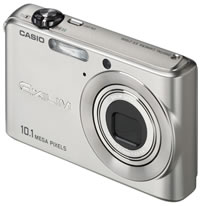 Just how much resolution do you need? Ten million pixels is a lot of information by any conventional measure, especially since most consumers rarely print out images larger than traditional 10x15cm enprints. That requires no more than the three megapixel sensors found on today’s very cheapest cameras, and now even high-end cameraphones.
Just how much resolution do you need? Ten million pixels is a lot of information by any conventional measure, especially since most consumers rarely print out images larger than traditional 10x15cm enprints. That requires no more than the three megapixel sensors found on today’s very cheapest cameras, and now even high-end cameraphones.
Ten megapixels lets you produce sharp prints at up to A2 poster in size or, more likely, crop in to tiny details and still end up with a printable image. But with great power often come great problems: huge file sizes, noisy images and irritating processing delays. Impressively, the Z1000 suffers from only the first of these (if you don’t think 4Mb per shot is huge, wait until you run out of memory cards halfway through a holiday).
It’s a looker, too, housed in a smooth all-metal case that hardly hints at the power inside. In front is a 3x lens that is its weakest point: there’s some distortion and softness at wideangle. Focusing is also haphazard, although the Exilim has a fine range of features to make up for it, from a decent manual focus mode to a 6cm macro for close-ups.
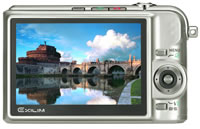 Around the back, a bright 2.8-inch widescreen LCD monopolises the available space. Only 2.5-inches is available for framing – the remainder is taken up by a fantastic vertical menu strip for instantly tweaking image size, quality, metering and more. Creative features are eclectic rather than comprehensive: a continuous flash mode shoots three flash shots in a second, and there are more pre-programmed scene modes than even the most bored teenager could wade through.
Around the back, a bright 2.8-inch widescreen LCD monopolises the available space. Only 2.5-inches is available for framing – the remainder is taken up by a fantastic vertical menu strip for instantly tweaking image size, quality, metering and more. Creative features are eclectic rather than comprehensive: a continuous flash mode shoots three flash shots in a second, and there are more pre-programmed scene modes than even the most bored teenager could wade through.
Notable among these is a High Sensitivity mode for shooting at up to ISO 3200 (but beware of dreadful noise here) and a brace of digital effects, Illustration and Pastel, that apply fun Photoshop-style art filters in camera.
The Z1000 handles very well, with virtually no shutter lag or processing delays. Images don’t appear to have been rushed, though, demonstrating a confident control over colour and exposure, and plenty of fine detail. As long as you don’t expect the three-dimensional clarity of a 10MP SLR like the Nikon D200, you shouldn’t be disappointed.
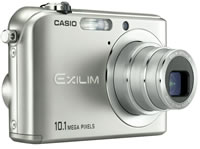 Verdict
Verdict
In digital photography, it’s rarely a case of how much resolution you need, but how much resolution you want. The Z1000 will fulfil your desire to extract the maximum detail from your subjects, without penalising you with a slow, ugly or stupid camera. Casio has taken a double digital lead in the compact market – but don’t expect it to last too long.
Rating: 88%
Spec sheet
Sensor 10.1 megapixels, 1/1.8-inch
Focal length (35mm equivalent) 38-114mm
Maximum aperture f/2.8-5.4
Shutter speed 4s – 1/2000 sec
Memory SD, 8Mb internal
ISO range 50, 100, 200, 400, (800, 1600, 3200)
Exposure modes Auto, 31 Best Shot
Metering modes Multi-zone, centre-weighted, spot
Focusing modes Auto (multi-zone, spot, free), manual, presets, Auto Macro, 6cm macro
Flash modes Auto, on, off, red-eye, slow synch (Night Portrait), flash power, Soft Flash
Drive modes Single, continuous (1.2 to 3fps), continuous flash (3fps), continuous zoom, self-timer
LCD monitor 2.8-inch colour LCD, 230,400 pixels
Weight 160g with battery and card
Power supply Lithium ion rechargeable, NP-40
Battery life 360 shots, CIPA standard
Transfer USB 2.0 Full Speed, video, PictBridge
 eBay has announced that it will start integrating Skype’s VoIP service with its U.S. auction site next week (as
eBay has announced that it will start integrating Skype’s VoIP service with its U.S. auction site next week (as  Bill Cobb, president of eBay’s North American auction business reckons they’re on to a winner with this one: “Skype represents a tremendous opportunity for our sellers to connect even more closely with their buyers,” he insisted.
Bill Cobb, president of eBay’s North American auction business reckons they’re on to a winner with this one: “Skype represents a tremendous opportunity for our sellers to connect even more closely with their buyers,” he insisted.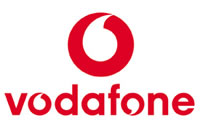 We all know the mobile handset is totally fragmented. Sure there’s a standard – it’s called Nokia – but everyone who isn’t Nokia isn’t very happy about that.
We all know the mobile handset is totally fragmented. Sure there’s a standard – it’s called Nokia – but everyone who isn’t Nokia isn’t very happy about that. Who’s in? Who’s out?
Who’s in? Who’s out? Much excitement is being generated by those companies already using Linux in their handsets. In a ‘don’t forget we’ve been doing this for ages’ way, Yoshiharu Tamura, Executive General Manager, Mobile Terminals Business Unit, NEC Corporation expounded , “As one of the leading pioneers with almost two years of experience shipping Linux-based mobile phones, we are delighted to participate in this initiative. We expect the foundation activities will accelerate further expansion of mobile Linux application developer participation, as well as global market growth of 3G mobile handsets.”
Much excitement is being generated by those companies already using Linux in their handsets. In a ‘don’t forget we’ve been doing this for ages’ way, Yoshiharu Tamura, Executive General Manager, Mobile Terminals Business Unit, NEC Corporation expounded , “As one of the leading pioneers with almost two years of experience shipping Linux-based mobile phones, we are delighted to participate in this initiative. We expect the foundation activities will accelerate further expansion of mobile Linux application developer participation, as well as global market growth of 3G mobile handsets.”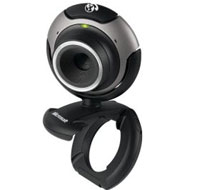 Microsoft has slipped out a pair of branded Webcams designed to offer tight integration with their hideously popular Messenger service.
Microsoft has slipped out a pair of branded Webcams designed to offer tight integration with their hideously popular Messenger service.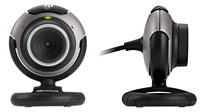 Both cams also come with built in mics, a wide angle lens to let social butterflies fit their vast armies of chums in frame and built-in cheesy video effects like falling snowflakes or twinkling stars.
Both cams also come with built in mics, a wide angle lens to let social butterflies fit their vast armies of chums in frame and built-in cheesy video effects like falling snowflakes or twinkling stars.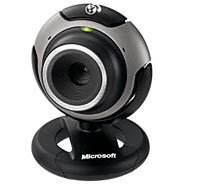 Here’s Microsoft’s Consumer Productivity Experiences Executive Vice President (who dreams up these job titles?) Tom Gibbons to explain how LifeCams are part of a new initiative by his company to tie in hardware products to Windows Live services.
Here’s Microsoft’s Consumer Productivity Experiences Executive Vice President (who dreams up these job titles?) Tom Gibbons to explain how LifeCams are part of a new initiative by his company to tie in hardware products to Windows Live services. According to Internet research firm Nielsen/NetRatings, the BBC Sport Website is the most popular online source for World Cup news in the UK, with over 1.3 million footie fans visiting the site in the first week of the tournament.
According to Internet research firm Nielsen/NetRatings, the BBC Sport Website is the most popular online source for World Cup news in the UK, with over 1.3 million footie fans visiting the site in the first week of the tournament.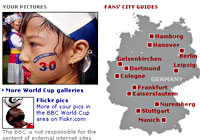 “The large audience figures for the weekend shows the major advantages the Internet has in on-demand content,” he added.
“The large audience figures for the weekend shows the major advantages the Internet has in on-demand content,” he added.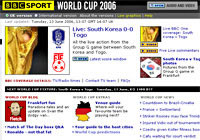 Mike Hemes, country manager for UK and Ireland at Packeteer, reckons that the bandwidth-busting footie action could cause big problems for IT managers, commenting: “It is likely that millions of workers will log on to watch matches due to faster Internet connections at work than at home …this will generate a huge surge in network traffic, eating into the bandwidth available to run business-critical applications effectively.”
Mike Hemes, country manager for UK and Ireland at Packeteer, reckons that the bandwidth-busting footie action could cause big problems for IT managers, commenting: “It is likely that millions of workers will log on to watch matches due to faster Internet connections at work than at home …this will generate a huge surge in network traffic, eating into the bandwidth available to run business-critical applications effectively.” Legally, a TV licence is required for any device that is “installed or used” for receiving television broadcasts, so that a networked PC used for streaming games needs a licence as well as the gogglebox at home.
Legally, a TV licence is required for any device that is “installed or used” for receiving television broadcasts, so that a networked PC used for streaming games needs a licence as well as the gogglebox at home.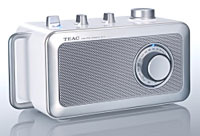 If you find that the modern world is just to fast, too brash, too complicated and just too goddamn digital, you may find TEAC’s new R1 AM/FM Radio the antidote to all those bleeping bits and bytes.
If you find that the modern world is just to fast, too brash, too complicated and just too goddamn digital, you may find TEAC’s new R1 AM/FM Radio the antidote to all those bleeping bits and bytes.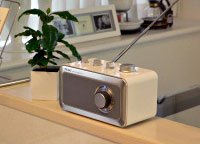 Although -disappointingly – there’s no DAB radio to be found onboard, TEAC has included a line-in socket so that users can play back tunes from new fangled iPods or other players.
Although -disappointingly – there’s no DAB radio to be found onboard, TEAC has included a line-in socket so that users can play back tunes from new fangled iPods or other players.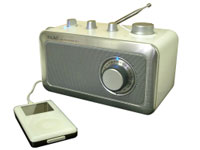 Specifications
Specifications  The second billionth GSM mobile phone is expected to be connected this weekend according to the GSM Association (GSMA).
The second billionth GSM mobile phone is expected to be connected this weekend according to the GSM Association (GSMA). “While it took just 12 years for the industry to reach the first billion connections. The second billion has been achieved in just two and a half years boosted by the phenomenal take up of mobile in emerging markets such as China, India, Africa and Latin America, which accounted for 82% of the second billion subscribers,” he added, breathlessly.
“While it took just 12 years for the industry to reach the first billion connections. The second billion has been achieved in just two and a half years boosted by the phenomenal take up of mobile in emerging markets such as China, India, Africa and Latin America, which accounted for 82% of the second billion subscribers,” he added, breathlessly. The GSM Association continues to develop initiatives to help folks in the developing world gain access to mobile communications, developing a sub$30 low cost mobile phone and putting pressure on governments to remove tax barriers on mobile products and services.
The GSM Association continues to develop initiatives to help folks in the developing world gain access to mobile communications, developing a sub$30 low cost mobile phone and putting pressure on governments to remove tax barriers on mobile products and services.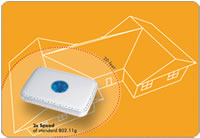 If you’re after super-fast Wireless kit and don’t mind the possibility of buying/refreshing your kit this could well be for you, if not we thought it would be best to start this article with a warning. Although the new PreN RangeMAX NEXT kit looks nice, there is a caveat (ours).
If you’re after super-fast Wireless kit and don’t mind the possibility of buying/refreshing your kit this could well be for you, if not we thought it would be best to start this article with a warning. Although the new PreN RangeMAX NEXT kit looks nice, there is a caveat (ours).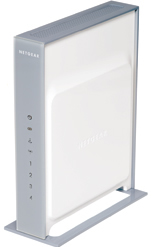 RangeMax Next Wireless ADSL Modem Router – DG834N
RangeMax Next Wireless ADSL Modem Router – DG834N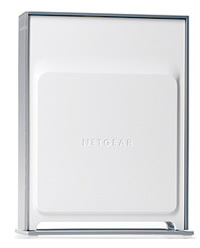 RangeMax Next Wireless Routers – Gigabit Edition – WNR854T
RangeMax Next Wireless Routers – Gigabit Edition – WNR854T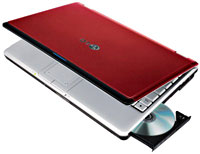 LG has announced their new multimedia-tastic 12-inch notebook PC, the LW25 EXPRESS DUAL, which is, apparently, “a portable multimedia powerhouse.”
LG has announced their new multimedia-tastic 12-inch notebook PC, the LW25 EXPRESS DUAL, which is, apparently, “a portable multimedia powerhouse.” The built in optical drive (or Super Multi ODD as LG likes to call it) supports playback and recording of all existing optical media formats inluding dual-layer DVD burning, allowing you to cram up to 8.5GB data on a single DVD.
The built in optical drive (or Super Multi ODD as LG likes to call it) supports playback and recording of all existing optical media formats inluding dual-layer DVD burning, allowing you to cram up to 8.5GB data on a single DVD.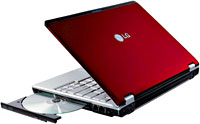 As for pricing and availability, your guess is as good as ours at the moment as LG seem to be keeping mum.
As for pricing and availability, your guess is as good as ours at the moment as LG seem to be keeping mum.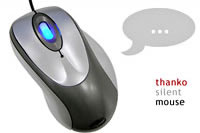 Is your late night keyboard clattering keeping your partner awake? Is your incessant mouse-clicking sending your friends mad? Or have you just got a bit of a problem with clattering, clicking things?
Is your late night keyboard clattering keeping your partner awake? Is your incessant mouse-clicking sending your friends mad? Or have you just got a bit of a problem with clattering, clicking things?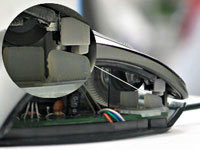 The illustration on their site seems to suggest that they’ve achieved this hush factor by simply slamming in a slab of silicone stuff into the mouse, but we’re sure there must be a bit more hi-tech jiggerypokery involved than that (surely?!!).
The illustration on their site seems to suggest that they’ve achieved this hush factor by simply slamming in a slab of silicone stuff into the mouse, but we’re sure there must be a bit more hi-tech jiggerypokery involved than that (surely?!!). The keyboard that’s as quiet as a, err, mouse
The keyboard that’s as quiet as a, err, mouse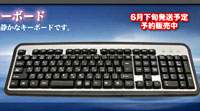 It’s a pretty basic looking affair with none of the groovy extras that Logitech like to bolt on, so gadget freaks are unlikely to be impressed.
It’s a pretty basic looking affair with none of the groovy extras that Logitech like to bolt on, so gadget freaks are unlikely to be impressed.